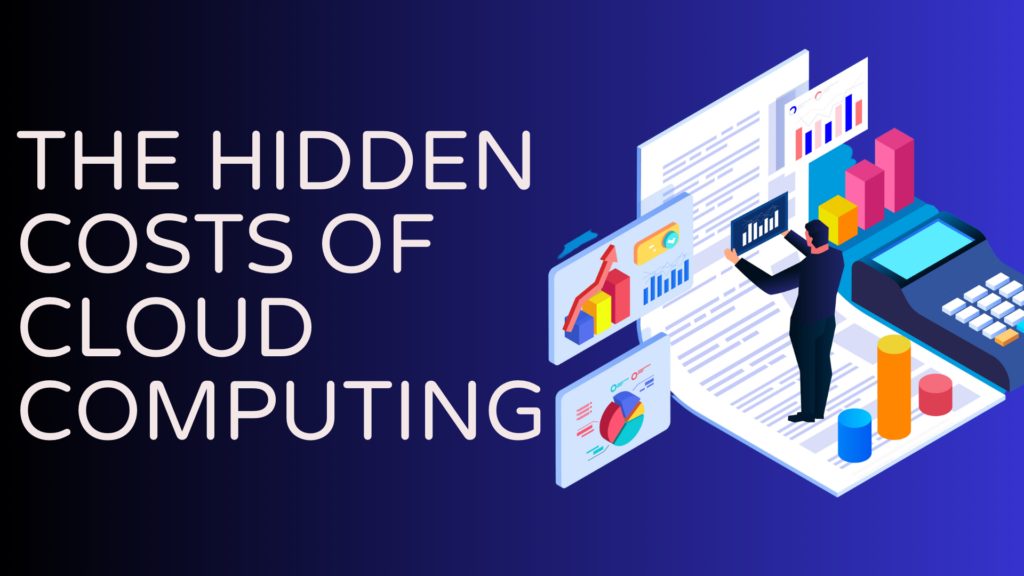The Hidden Costs of Cloud Computing
What You Need to Know to Avoid Surprise Bills
Cloud computing has revolutionized businesses’ operations, providing unparalleled scalability, flexibility, and cost savings. However, many organizations are still struggling with the hidden costs of cloud computing that most cloud providers don’t want you to know about.
Three Top IT Service Professionals Offer Sound Insights
In this article, we’ll explore some of the hidden costs of cloud computing and provide expert insights from Aaron Kane at CTI Technology, a Chicago IT services company, Jorge Rojas with Tektonic Managed Services, who provide IT services in Toronto, and Kenny Riley with Velocity IT (https://www.velocityit.net/business/it-services-dallas/)
- Data Transfer Fees: Data transfer fees are among the most significant hidden cloud computing costs. Most cloud providers charge for transferring data between regions or to and from the cloud. If you’re not careful, these fees can quickly add up and result in unexpected bills. According to Aaron Kane, “Many businesses underestimate the amount of data they transfer between regions, and as a result, they get hit with hefty data transfer fees.” To avoid these fees, Kane recommends optimizing your data transfer by compressing files, reducing data redundancy, and using caching techniques.
- Storage Costs: Cloud storage is a great way to store and manage your data. However, the cost of storing data in the cloud can quickly add up, especially if you’re storing large amounts of data or using premium storage options. Jorge Rojas states, “Organizations often overlook the cost of storing data in the cloud, and as a result, they end up with surprise bills.” To avoid these costs, Rojas recommends using tiered storage options, deleting unnecessary data, and leveraging data compression technologies.
- Third-Party Services: Many cloud providers offer various third-party services, such as monitoring, analytics, and security, that can enhance your cloud computing experience. However, these services often come with additional costs that are not always transparent. Kenny Riley states, “Organizations need to be aware of the additional costs associated with third-party services and ensure they’re getting value for their money.” To avoid these costs, Riley recommends evaluating the cost and benefits of each service and using only the ones that add value to your business.
- Licensing Costs: Cloud providers offer a range of licensing options for software and applications, but these costs can quickly add up if you’re not careful. According to Aaron Kane, “Licensing costs are often overlooked by organizations, and they end up paying more than they need to.” Kane recommends negotiating licensing agreements with your cloud provider, using open-source software, and leveraging pay-per-use licensing options to avoid these costs.
- Personnel Costs: Moving to the cloud requires specialized expertise and skills, which can add up if you’re not careful. Jorge Rojas states, “Many organizations underestimate the personnel costs associated with managing and optimizing their cloud environment.” To avoid these costs, Rojas recommends leveraging automation tools, outsourcing cloud management to a managed service provider, and investing in cloud training for your IT team.

Wrapping Up
In conclusion, cloud computing can provide significant benefits to organizations, but it’s essential to understand and manage the hidden costs of cloud computing. By following the expert insights provided by Aaron Kane, Jorge Rojas, and Kenny Riley, you can avoid surprise bills, optimize your cloud environment, and achieve more significant ROI from your cloud investments. Remember, cloud cost management is an ongoing process that requires continuous monitoring, optimization, and collaboration between your IT, finance, and business teams.


